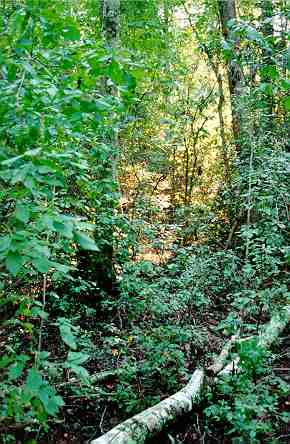What Are Wetlands?
Wetlands come in all sizes and shapes. They may be found in prairies, at high elevations in mountainous areas, in hill country, and especially in deltas and coastal lowlands. The areas of immediate concern is a parcel of the Great Dismal Swamp, a coastal plain fresh water wetlands in northern Currituck County. It is difficult to define wetlands, because there is so much variety. However, they are all generally low compared to the surrounding area. They are often waterlogged or covered by shallow water for all or part of a year, and they support plant and animal communities which have adapted to water budgets with marked seasonal variations.
Why Are Wetlands So Important?
The extremely important coastal fishing and shellfishing economy of North Carolina demands clean healthy estuaries, and it is the bordering wetlands which determine the condition of estuarine waters. Wetlands perform as natural filters which clean the nutrients and sediments from waters that drain into the estuaries. They also provide for pollution retention, flood control, habitats for wildlife, ground water recharge, and aquatic life production.
Increased nutrient levels from agricultural runoff, construction of canals, and lumbering operations have combined to deteriorate the effective role that wetlands play in providing clean water runoff at controlled rates for the estuaries and primary nurseries along their fringes. Without these controls the nurseries will cease to function, and most of the animal life in the coastal waters of North Carolina will disappear: no wetlands, no estuaries, no seafood. According to information from the U.S. Fish and Wildlife Service and others, about fifty percent of the nation's swamps and marshes (wetlands) have been effectively destroyed just during the last forty years.
Things To Look For
The careful observer may see evidence of a variety of mammals that inhabit the swamp. White-tailed deer, black bear, gray squirrel, bats, otter, mink, raccoon, gray and red foxes, and bobcat have been observed and hunted or trapped in the swamp.
Wetland habitats provide the ideal environment for a diversity of amphibians and reptiles. Lizards, salamanders, frogs, toads, and turtles share the swamp habitat with twenty-one varieties of snakes. The poisonous snakes are the copperhead, canebrake rattlesnake, and cottonmouth.
The ideal time for observing the greatest variety of birds in the swamp is during the spring migration---from April through June. More than 200 species of birds have been identified in the Dismal Swamp.
Wetlands may be second only to the great rain forests in life diversity and the impact they have on world ecosystems. Yet, they are indeed fragile and need out serious consideration if they are to survive.

Visitors wishing access to the boardwalk
should contact:
Dr. Maurice Powers
ECSU Box 858
Elizabeth City, NC 27909
(252)336-4577
Guided tours are available at no charge.
Some photos taken from
Wildlife in North Carolina Magazine,
and some are courtesy of
U.S. Fish and Wildlife Service.

Schedule for a tour today. You never know what you might see!!!
The Great Dismal Swamp Boardwalk Project
is supported by:
U.S. Department of Education,
U.S. Fish and Wildlife Service,
& U.S. Navy.
Back to the first page...
Click here to see some pics...
Research on the water quality of the Great Dismal Swamp
My personal page...with a little info about me
Books about wetlands and the environment
elmorelc@yahoo.com


